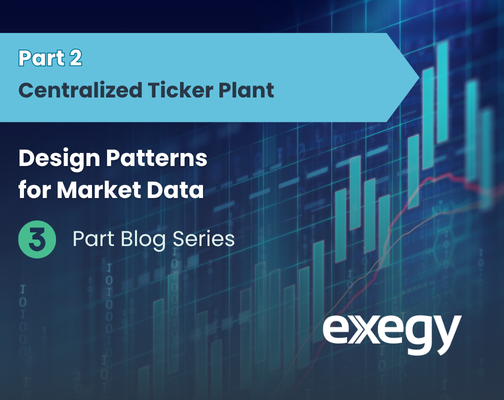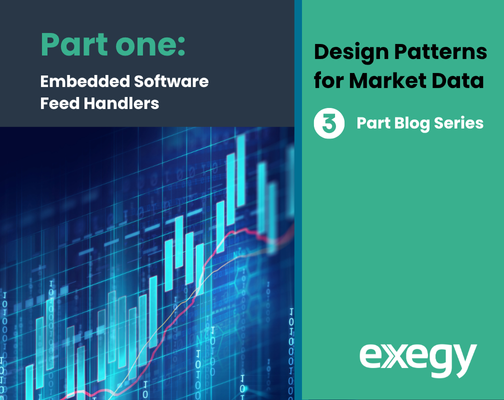Why Trading Index Options Continues to Grow in Popularity
Recently, trading index options has grown in popularity both domestically and globally. The advantages of index options to portfolio and cost management are clear reasons for their surge in trading volume. Understanding how these benefits are leveraged can aid in realizing trading and infrastructure cost-efficiencies for your firm.
Growth and Popularity of Index Options
US Indices
In US markets, options cover a variety of indices—the S&P 500 (SPX), Russell 2000, Nasdaq 100, Dow Jones, and Cboe’s Volatility Index (VIX). While these options continue to grow—contracts traded increasing by 13% in 2018—leading instruments are those based in the S&P 500. The SPX and VIX underlie some of the most liquid options available, and the popularity of these options is increasing.
The most popular US-based index options are on SPX. The total trading volume of SPX options was 371 million contracts in 2018, representing a notional value just—up 27% from the previous year. By comparison, the most traded security option—Apple—traded 274 million contracts in 2018. The popularity of SPX options is largely driven by SPX’s ability to gauge the state of the US equities market as a whole. This concept is rooted in the instrument’s breadth of underlying equities and its use of market capitalization—instead of price—as a weighting method.
The other widely popular US index options, VIX, traded around 167 million contracts in 2018. Derived from the S&P 500 Index, VIX measures the implied volatility of SPX options, allowing traders to hedge not just against market changes but on the sentiment of those market changes. While lesser than SPX or AAPL, VIX still secures wide popularity as it offers an alternative hedging method to SPX options traders.
Global Indices
Though SPX and VIX options lead the way in US markets, their domestic popularity is met by similar popularity in index options globally. For example, India’s Bank Nifty Index Options saw over 1.5 billion in traded contracts in 2018—an increase by 98.3% year-over-year. Though the Bank Nifty Index is an outlier, the recent popularity of index options spans markets. Korea’s Kospi 200 options had an annual growth rate of 21.8% and a trading volume 286 million contracts greater than SPX. While this growth is sobered when volume is normalized by price and currency conversion; the leverage made accessible by contract multipliers on these indices entice further investment.
Table 1. Growth of Top Index Options, 2017-2018
| Contract | Ticker Symbol | Exchange | 2018 Trading Volume | YoY Change | 2018 Volume * Avg Price ($USD) |
| Bank Nifty 50 Index | NIFTY | NSE | 1,587,426,222 | 98.3% | $239,448,244,411 |
| Kospi 200 Index | KRX | KRW | 657,832,873 | 21.8% | $1,245,370,235 |
| CNX Nifty Index | CNX 100 | NSE | 622,118,790 | 10.6% | $96,636,542,291 |
| S&P 500 Index | SPX | CBOE | 371,345,596 | 27.2% | $981,761,629,977 |
| Euro Stoxx 50 Index | SX5E | Eurex | 273,634,066 | 4.0% | $1,169,794,081,946 |
| Taiwan Stock Index | TAIEX | TAIFEX | 194,438,947 | 4.3% | $64,160,559,298 |
| Volatility Index | VIX | CBOE | 167,470,555 | -7.6% | $3,366,576,832 |
Source: The Futures Industry Association (FIA)
Diversifying and Managing Risk with Index Options
One factor driving the immense popularity of index options is their utility for managing risk and diversification. While not all trades on index options are used to hedge, the diversified portfolio of assets underlying index options makes them an appealing resource for portfolio management.
In general, indices have more stability in price movements and their natural diversification lowers the burden on analysts to anticipate pricing. Instead of hedging every individual stock and tracking the positions in a large portfolio, portfolio managers can hedge large groups of securities with one instrument and prioritize new profit-driving positions over risk-reduction positions. Index options are also more liquid than their equity-based counterparts, making a position with them less exposed to the risk of slippage. Managing a comparable portfolio of equity options, traded at lower volumes, increases the risk of price fluctuation during trade execution.
In combination, the value of indices—diversification—and the value of options—hedging against risk of underlying assets—make index options a strong tool for simplifying portfolio management and refocusing research and analysis on profit-driving opportunities.
Using Index Options to Enter Global Markets
Another method for diversification and identifying new profit centers is expanding outside of US markets—particularly into high-growth emerging markets. As we see with India’s NIFTY, foreign countries present lucrative exposure to new alpha. However, the risk of emerging markets is always a consideration; so, index options provide a way to hedge a globalized portfolio.
While thoughtful consideration in taking a position is always encouraged, index options reduce the burden of developing global market expertise. Since index options are less impacted by changes within a specific company or industry, traders can access markets without firm-specific expert knowledge. With index options, traders can effectively enter markets in foreign countries, track larger market trends, and globalize their portfolios.
Reducing Transaction Costs and Tax Liabilities
Beyond the trading and portfolio advantages, index options also offer opportunities to reduce costs that undermine profitability. The transaction costs of closing a position resulting from assignment are no longer required with European-settled index options. This cash-settlement process is unlike stock or ETF options as no assets are exchanged—as demonstrated with the S&P 500’s index and ETF, SPX and SPY options. At contract expiration, shares of the SPY ETF are assigned to a buyer who would need to sell those shares to realize profit. However, an SPX options trader receives the net cash value, saving the additional transaction.
Another financial advantage of index options in the US is reducing tax liability according to the Tax Code’s Section 1256. The capital gains of certain types of contracts—specifically “broad-based index” contracts—are taxed according to a 60/40 rule. Capital gains on index options are taxed 60% at the lower, long-term capital gains rate, while just 40% is taxed at the short-term capital gains rate. The result is a lower overall tax rate compared to security-based options. However, all tax-based strategic changes should be confirmed with tax experts to ensure their applicability to the situations of each firm.
Trading Index Options Throttle Market Data Costs
For traders of US index options, the Options Price Reporting Authority (OPRA) feed’s lower exchange fees are often mistaken as a lower total cost of market data. In practice, OPRA outputs a substantial quote volume which the market data costs for bandwidth, servers, and data normalization scale to. Instead of the 40-gigabit network capacity required to handle the load of OPRA market data, a firm trading index options could trade with a 10-gigabit network through a subscription-based market data solution. With a 10-gig capacity, traders can access the short list of symbols they need to trade effectively and build a more cost-efficient trading infrastructure.
The benefits of trading index options are evident and explain why volume has increased domestically and globally. Beyond a straightforward hedging strategy, index options present financial benefits that ease profitability, particularly while other asset classes drive expenses higher.




